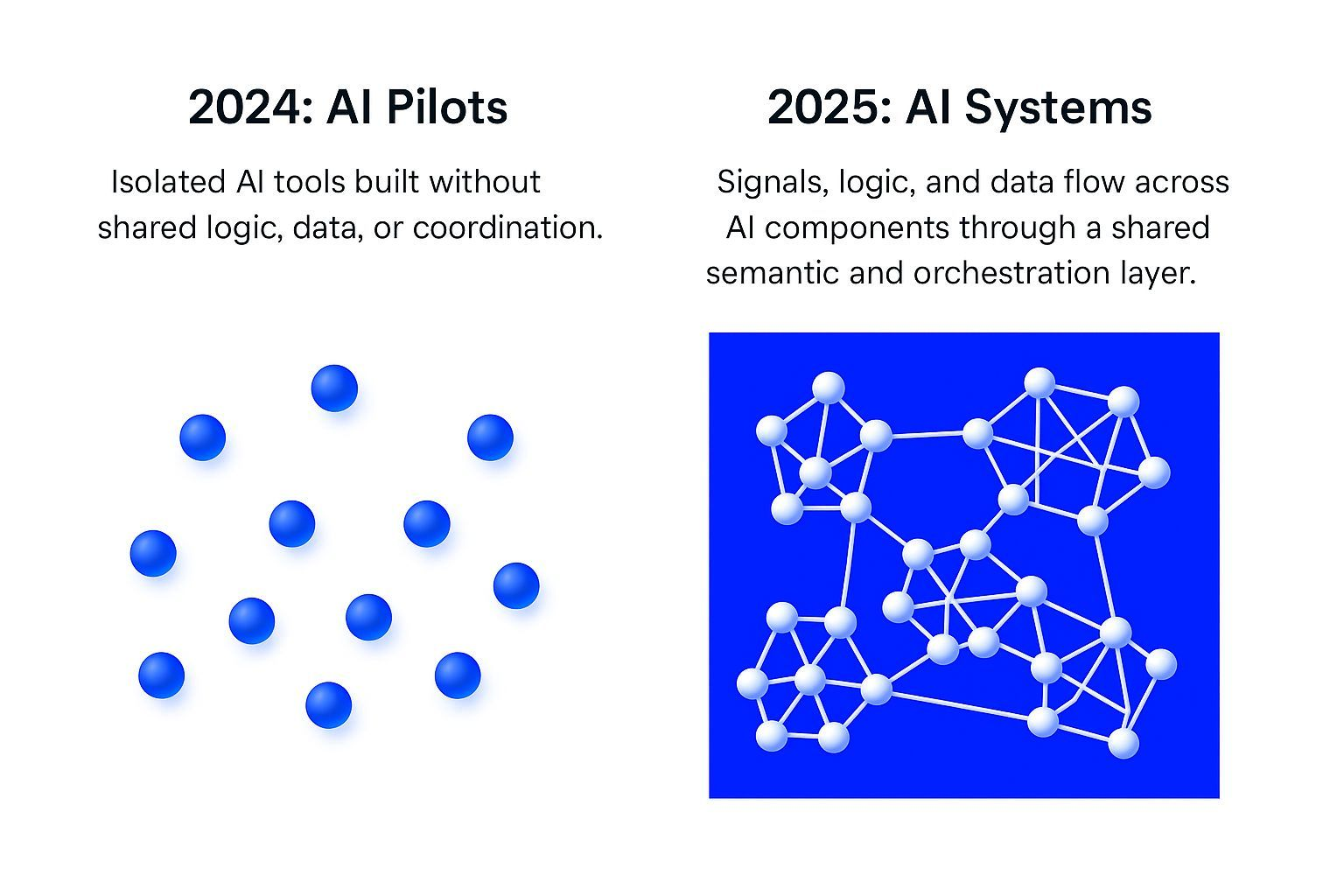Don’t build the whole AI machine before you know it runs
Everyone wants modular AI.
It’s the holy grail: AI that’s flexible, reusable, integrated across systems; not a one-off prototype, but a strategic capability.
But here’s the reality in many large organisations:
You can easily spend 12 months building plumbing (infrastructure, APIs, data cleanup, architecture diagrams) without ever shipping something users can actually touch.
That’s the trap.
And if you’re not careful, you’ll fall right into it.
The dream: Modular, integrated AI
In 2025, the focus is shifting.
As Philippe De Ridder recently put it, this is the year we move from AI experiments to real business outcomes. And he’s right.
The ambition is clear:
→ A robust, modular AI architecture
→ Agents that work across products and services
→ A scalable, future-proof setup
But in many organisations, this turns into a tech-first project. The result?
Months of effort, long before anything gets tested with real users.
That’s not how you scale AI.

The better way: Deliver value fast
The smarter approach?
Start with a small slice that delivers actual value.
Yes, design your ideal modular architecture. But don’t start by building all of it.
Instead:
- Map out the long-term vision on paper
- Build just enough to get a functional AI agent in front of users
- Add a lightweight routing layer that decides:
- → Should this task go to the agent?
- → Or fall back to your app or contact centre?
That’s it. Nothing fancy. Just enough to ship and learn.
Why this works
This approach creates a direct feedback loop — and that’s where the real value lies.
Once your first slice is live, you can:
- ✅ Measure outcomes (accuracy, CSAT, task completion)
- ✅ Collect user feedback and analytics
- ✅ Experiment with different models, stacks and approaches
- ✅ Learn what works — and what doesn’t
- ✅ Scale from there
Instead of guessing what users need, you observe it in the wild.
Instead of overinvesting in infrastructure, you make smart, informed bets.
Scale with confidence
Once you’ve proven the value, then you can expand.
- Add more use cases
- Improve your orchestration layer
- Modularise and generalise your components
- Scale what’s already working
Because now, you’re not building based on assumptions, you’re building based on results.
Final thought
Don’t build the whole machine before you know it runs.
Start small, learn fast, scale smart.
(And definitely go check out Philippe De Ridder’s original post!)



